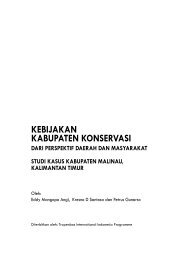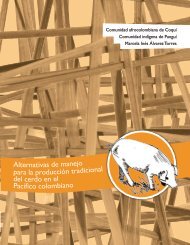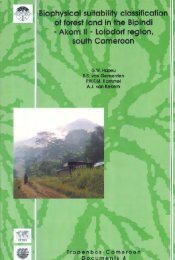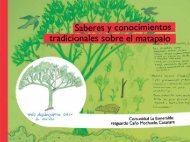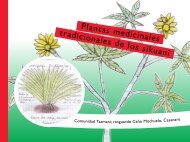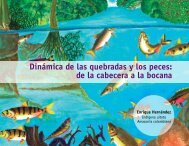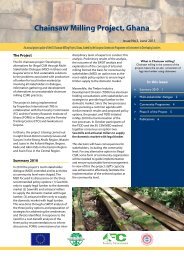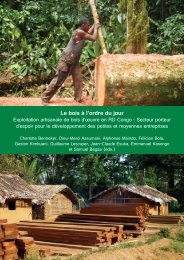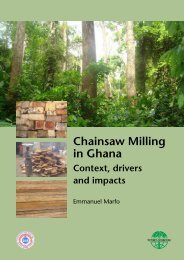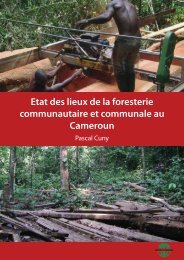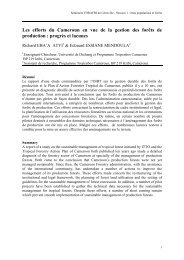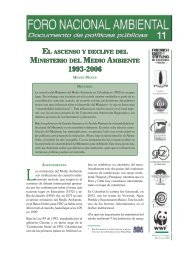Download the publication - Tropenbos International
Download the publication - Tropenbos International
Download the publication - Tropenbos International
Create successful ePaper yourself
Turn your PDF publications into a flip-book with our unique Google optimized e-Paper software.
Average PI<br />
140<br />
120<br />
100<br />
80<br />
60<br />
40<br />
20<br />
Biodiversity hotspots and conservation priorities in Central African rain forests<br />
y = -0.4979x + 120.19<br />
F1,10 = 111.71, R 2 = 0.918, P < 0.0001<br />
0<br />
0 50 100 150 200 250<br />
Average GHI<br />
Figure 5.4 Correlation between <strong>the</strong> average GHI scores and <strong>the</strong> average PI scores for <strong>the</strong><br />
various vegetation types.<br />
Geostatistical results<br />
The analysis of <strong>the</strong> spatial structure of <strong>the</strong> dataset did not show any preferential spatial<br />
trend. Therefore, an omni-directional analysis of <strong>the</strong> semivariance (best described by a<br />
spherical model) was applied. Figure 5.6 shows <strong>the</strong> semivariogram and its<br />
characteristics. The GHI variable showed a strong spatial dependence within a range<br />
of 10500 m. The nugget (645) was low compared to <strong>the</strong> total variance or sill (3700).<br />
This suggests that more than 82% (100*(Sill-Nugget)/Sill) of <strong>the</strong> semivariance of GHI<br />
could be modelled by <strong>the</strong> variogram over a range of 10 km. The output map of <strong>the</strong><br />
ordinary kriging (Figure 5.7) was reclassified into five GHI classes, partitioning <strong>the</strong><br />
conservation value of <strong>the</strong> Campo-Ma’an forest. This partition showed that 1% of <strong>the</strong><br />
area was characterised by a very high conservation value, 45% by a high conservation<br />
value, 30% by an average conservation value, 15 % by a low conservation value and<br />
9% by a very low conservation value. A considerable portion of <strong>the</strong> National Park and<br />
<strong>the</strong> forests around Massif des Mamelles and Mont d’Eléphant was characterised by a<br />
high conservation value, with highest values found in Dipikar Island, Massif des<br />
Mamelles, Mont d’Elephant and in <strong>the</strong> submontane forest on hilltops. The forests in<br />
<strong>the</strong> Ma’an area, around Campo and agro-industrial plantations, near villages and along<br />
<strong>the</strong> roads had a low conservation value. Similar patterns were observed for <strong>the</strong><br />
distribution of strict and narrow endemic species (Figure 5.1).<br />
97



